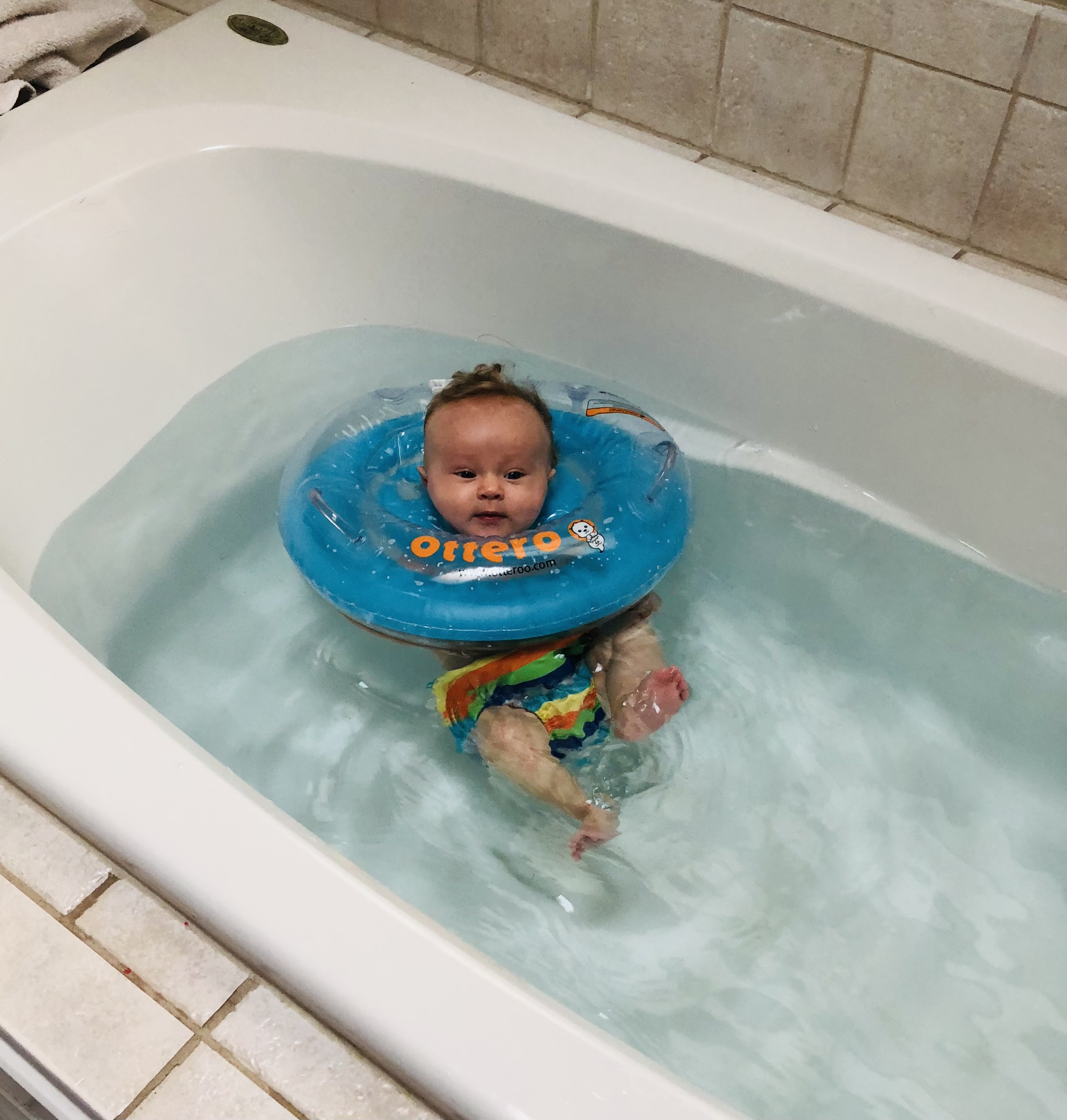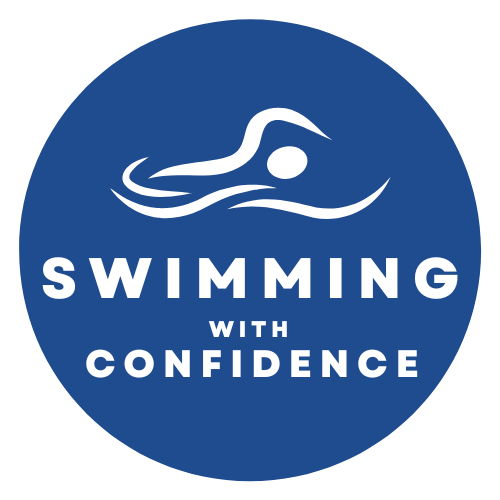
Should Your Child Wear Floaties?
There’s a lot of debate about whether kids should use floaties while learning to swim. Some parents swear by them, while some instructors say they do more harm than good. The truth? It depends on how and when you use them!
Floaties can help introduce kids to the water, build confidence, and encourage independence—when used correctly. But they can also create bad habits if relied on too long. Let’s break down the ones I use and recommend, and the ones I suggest skipping.
Floaties I Use and Recommend
1. Otterroo (Ages 6 Weeks–8 Months)
Are neck floaties safe? Many parents worry they’ll hurt their baby, but when used correctly, they allow for natural movement in the water. Babies carry most of their weight in their head, and the buoyancy of the water helps them move freely without restricting their arms and legs.
I’ve used the Otterroo brand for all four of my children because they are committed to safety and quality. The key is warm water, constant supervision, and short sessions—start with five minutes and go up to 20 max. If your baby doesn’t like it, that’s okay! Don’t force it.
 2. Free Swimming Baby (Ages 6–18 Months)
2. Free Swimming Baby (Ages 6–18 Months)
I bought this floaty on Amazon a few years ago and it's been through 4 kids! I love that it allows them to practice kicking and splashing while keeping their face out of the water. Yes, they may still get splashed (which is a good thing!), but they won’t swallow water or tip easily.
I’ve only seen my wildest child flip it once—if you knew him, you wouldn’t be surprised. My youngest started using it at 8 months old in the shallow end, pushing herself around with her feet, and she loved it!

3. Puddle Jumpers (Ages 18 Months–3 Years)
Puddle jumpers sometimes get a bad rap from swim instructors, but I love them! They are US Coast Guard-approved and can be used instead of a life jacket on boats and kayaks. They offer more freedom in the water than a bulky life jacket while still providing support.
That said, they’re often advertised for 5- to 7-year-olds, but let’s be real—by that age, kids should be learning to swim independently. I introduce puddle jumpers around 14–18 months, once a child can hold their head up and maneuver without constantly getting their mouth in the water.
The trick is to teach them to blow bubbles and keep their mouth closed so they don’t drink the water. Puddle jumpers can be a great tool for independence, and I recommend taking them away around age 3 to encourage actual swimming. My kids, who know how to swim, still wear them when kayaking!
Floaties I Don’t Recommend
1. Life Jackets (In a Pool Setting)
Life jackets are a must for open water and boating, but I never recommend them in a pool. They are bulky, limit movement, and don’t promote confidence or independence. If your child is too big for a puddle jumper, they are more than capable of learning to swim!
Even kids with disabilities can learn to swim or navigate the water safely in ways that work for them. Life jackets have their place—just not in the pool.
2. Pool Noodles
Ugh—I literally said that out loud as I typed this. Pool noodles are cheap and unreliable for flotation. It usually takes multiple noodles to create enough buoyancy, and even then, they’re unstable.
That said, I do love the Big Joe brand because it actually supports adults in the water! But pool noodles should be for play only, not as a safety device.
3. Built-in Flotation Swimsuits
These include swimsuits with inner tubes or life-jacket-type padding sewn in. Just…no. Many pools actually ban these because they lack safety standards. Stick to separate, properly tested flotation devices if needed.
4. Any Float That Claims to "Teach" Swimming
Nope. One of the first things I teach beginner swimmers—babies, kids, and adults—is to put their face in the water. Flotation devices encourage the exact opposite.
If you want your child to truly learn to swim, the best thing you can do is gradually remove flotation aids. Need help with this transition? Check out my Ultimate Swim Lesson Bundle for step-by-step guidance!
Final Thoughts
There’s a lot of content out there about how floaties create bad swimmers. But after teaching hundreds of people at all ages and ability levels, here’s my take:
Early use of floatation devices does not stop a child from learning to swim—as long as they’re used properly and phased out at the right time.
However, by age 3, children are 100% capable of learning to swim. So don’t be afraid to take away the floaties! Confident kids become confident swimmers—and vice versa.
Want to help your child gain real water independence? START NOW. The sooner you teach them, the sooner they’ll thrive in the water!

